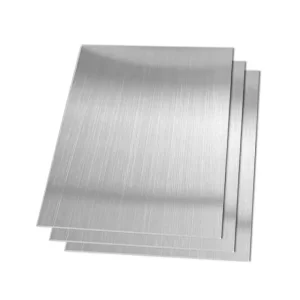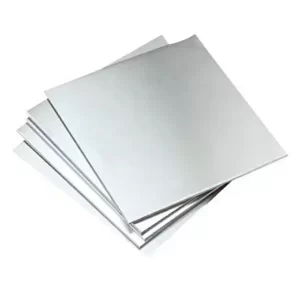Is 201 stainless steel food safe?
In the realm of kitchenware and food processing equipment, stainless steel has long been a favored material due to its durability, corrosion resistance, and ease of cleaning. Among the various grades of stainless steel, 201 stainless steel often comes up as an affordable alternative to higher-end options like 304 or 316 stainless steel. However, the question of whether 201 stainless steel is food safe frequently arises, especially among consumers seeking to balance cost and safety. Let's delve into this topic to understand the intricacies of 201 stainless steel and its suitability for food-related applications.
1) Basic characteristics of 201 stainless steel
We need to understand the basic composition and characteristics of 201 stainless steel. 201 stainless steel is a low-nickel, high-manganese, high-nitrogen austenitic stainless steel. Compared with the common 304 stainless steel, it contains less nickel and chromium, but increases the content of manganese and nitrogen to improve its processing performance and reduce costs. This material has a wide range of applications in decorative pipes, industrial pipes, shallow drawn products and other fields.
2) Food safety concerns
In the field of food safety, the key issue is whether the material will migrate harmful substances into food, especially heavy metals such as nickel, chromium and other additives or impurities that may be present. For stainless steel, its corrosion resistance and stability are the key to ensuring food safety.
3) Migration of nickel and chromium
Although the nickel content in 201 stainless steel is low, nickel is one of the essential trace elements for the human body, and under normal use conditions, the nickel in stainless steel will hardly migrate into food. However, if the surface of the material is damaged or subjected to long-term effects of corrosive substances such as strong acids and alkalis, the risk of nickel migration may increase. Similarly, although chromium is essential for the corrosion resistance of stainless steel, hexavalent chromium (Cr⁶⁺) is a known toxic substance and its migration needs to be strictly controlled. Fortunately, the chromium in stainless steel mainly exists in the form of trivalent chromium (Cr³⁺), which is relatively safe.
4) Effect of manganese
The higher manganese content in 201 stainless steel is another concern. Manganese is an essential trace element for the human body, but excessive intake may have adverse effects on human health. However, under daily use conditions, the manganese in 201 stainless steel will hardly migrate into food, so its risk is relatively low.
5) Regulations and standards
In order to ensure food safety, countries and regions have formulated strict regulations and standards to regulate the use of food contact materials. These standards usually specify the limits of migratable substances in the material and require manufacturers to carry out necessary testing and certification. Therefore, when choosing 201 stainless steel as a food contact material, you should ensure that it complies with the requirements of relevant regulations and standards.
6) Conclusion
201 stainless steel is food safe under normal use conditions. However, this does not mean that its potential risks can be ignored. In order to ensure food safety, it is recommended to consider the following points when selecting stainless steel materials:
● Compliance with regulations: Ensure that the selected material complies with local and international food safety regulations and standards.
● Material quality: Choose high-quality products from reputable manufacturers.
● Use environment: Avoid exposing stainless steel to extremely corrosive environments to reduce the risk of migration of harmful substances.
● Regular maintenance: Regularly inspect and maintain equipment and containers in contact with food to ensure that their surfaces are free of damage and corrosion.
In short, through reasonable selection and use, 201 stainless steel can become one of the reliable materials to ensure food safety.








